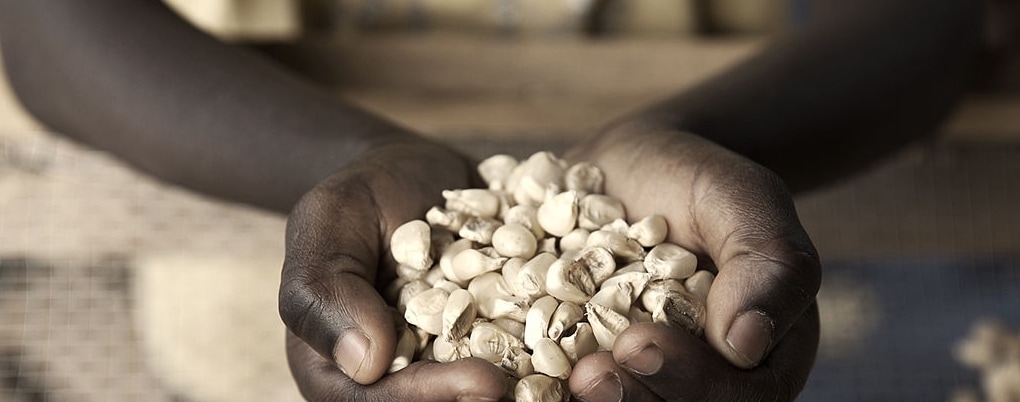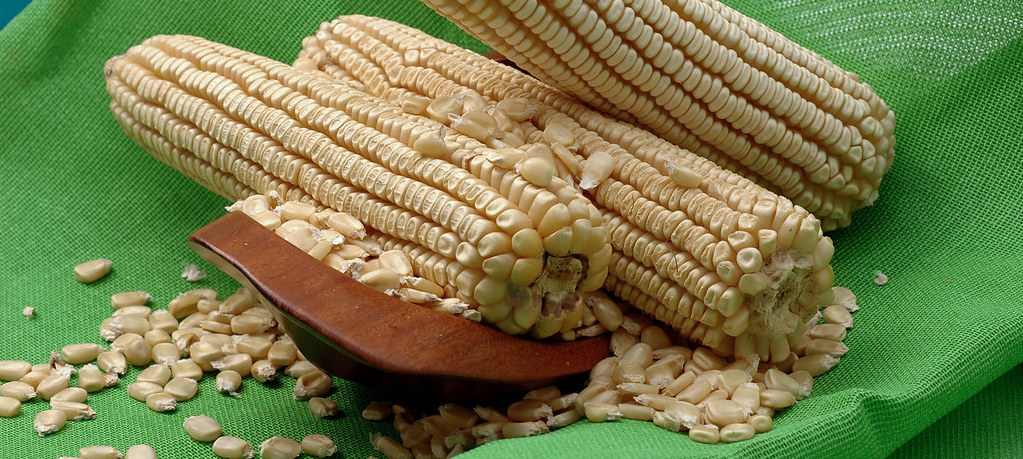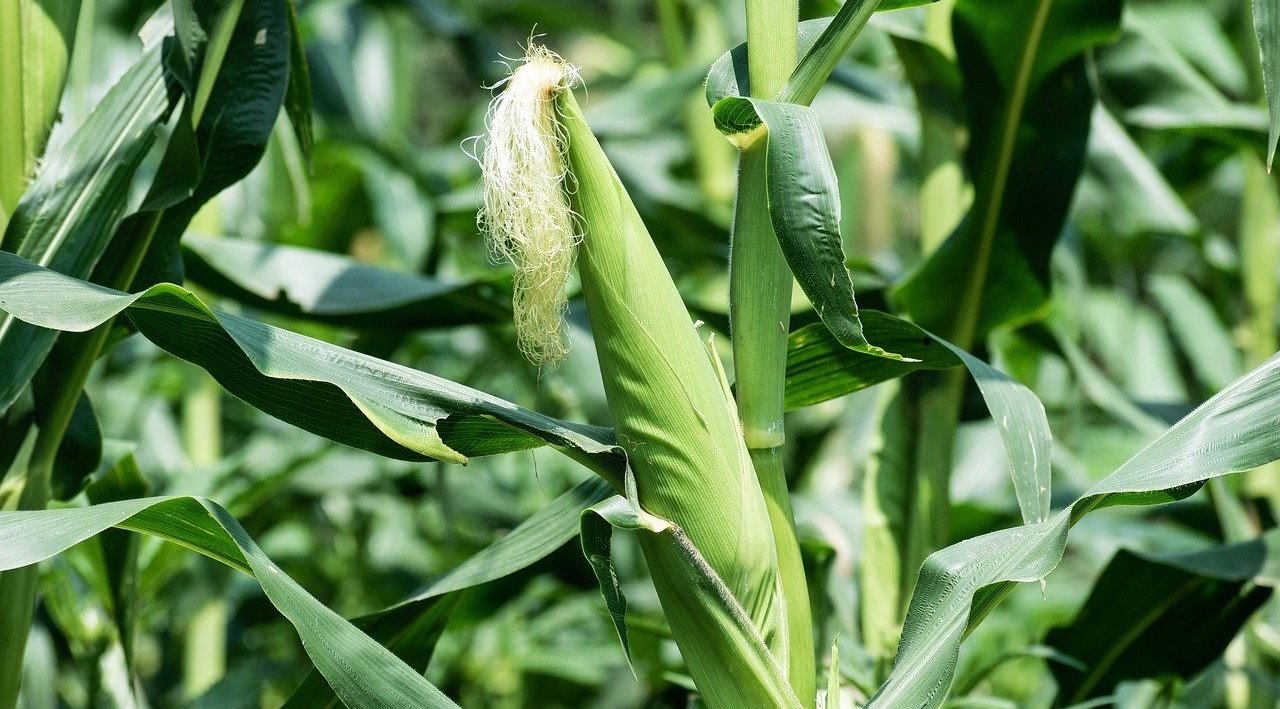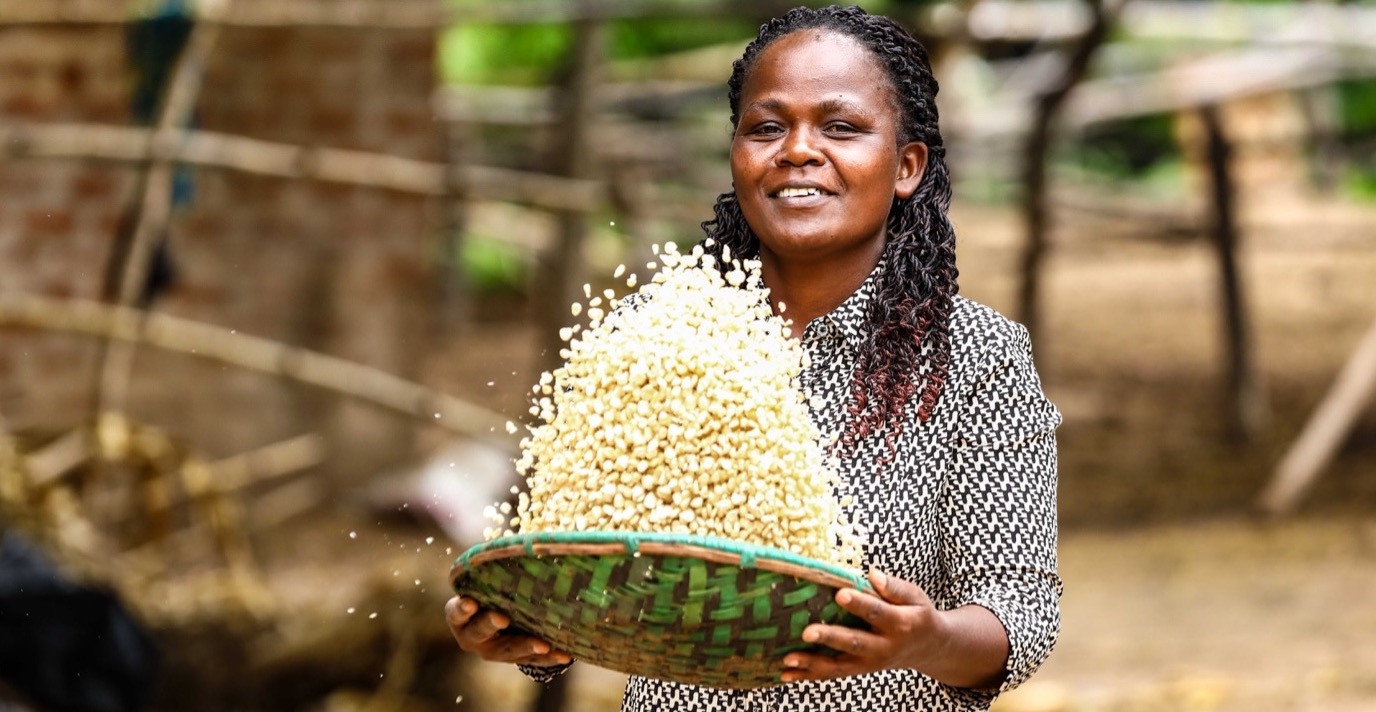After learning Regenerative Agriculture practices to better cope with the effects of climate change, Silvania Monthe, a VBA and farmer in Wotenzi Ward, Makueni County, Kenya, shows off the green maize plants in her mother demo plot. Photo: CGA
Regeneration agriculture helps smallholder farmers adjust to erratic weather patterns
Silvania Monthe, a Village Based Advisor (VBA) and farmer, walks between rows of healthy maize plants, stopping to admire and tend to them. Like many farmers in the Eastern region of Kenya, Monthe, is passionate about her farm, confident that her hard work will be the foundation for a brighter future for herself and the community.
For many farmers like Monthe, improving yields was a challenge. Limited access to extension services and many years planting the same crops on the same land year after year, have depleted the soil’s fertility. In addition to this, hot dry spells are becoming more frequent, chronic water shortages arising from erratic rainfall seasons and perennial droughts.
“Because of climate change, the rains have now become very erratic. Sometimes we receive very little, and our farm production has greatly reduced.” says Monthe.
Monthe was excited when the Cereal Growers Association (CGA) in collaboration with the Makueni County extension officer in her village selected her to serve as a lead farmer with the Regenerative Agriculture (RA) project. The AGRA-supported project helps farmers like Monthe to increase food production by improving farming practices, through adoption of RA and CSA practices and technologies like proper seed spacing and intercropping maize and sorghum fields with legumes, organic farming, such as minimum tillage, use of cover crops, crop rotation, terracing to reduce soil erosion, mulching to keep the soils moist, use of basins to preserve water and the use of composted manure to give the topsoil the texture of a virgin fertile arable land.
Legumes are nitrogen-fixing crops that repel pests and replenish soil health, making the soil more effective at retaining water during periods of drought. The legumes such as pigeon peas and cowpeas’ leaves also provide Monthe’s family with additional source of nutritional vegetables.
As part of a project activity, the farmer spent October to December 2020 rain season learning about regenerative agriculture and climate smart agricultural practices and technologies on a demonstration plot, and the following rain season adopting the practices on their own land. This hands-on approach is known as ‘Mother’ and ‘baby’ demos.
The VBA’s establish mother demos in their communities, which are used to train other farmers who establish baby demos. Over time, baby demo hosts can graduate to a mother demo status as they start to train other farmers and replicate the practice in new baby demos.
To demonstrate the difference between traditional farming methods and the techniques she learned through the Regenerative Agriculture project, Monthe established two demo plots measuring 10 by 15 metres.
“At the mother demo, we are learning by doing, and we are also able to see the benefits of these new farming methods by comparing them to our traditional ways,” says Monthe.
Compared to traditional methods, the plot using improved farming practices yielded more than double the amount of maize. “In plot measuring 10 by 15 meters, I used RA practices such as minimum tillage, organic manure, mulching and intercropped pigeon peas, beans and maize. I harvested; 7.4 kilograms of beans and 50 kilograms of maize and I’m yet to harvest pigeon peas. In the other plot without RA practices, I harvested 5.6 kilograms of beans and 20 kilograms of maize” says Monthe.
“In another two plots measuring 10 by 20 meters, I planted beans using RA practices and technologies such as minimum tillage, organic manure, and mulching and harvested 30 kgs of beans, the other plot without RA practices, I harvested 12.2 kilograms of beans,” Monthe said.
The section planted with conventional methods had dry soil and maize stalks with yellow leaves, a sign of nitrogen deficiency. In the area where Monthe planted maize with legumes, the maize stalks are green, taller and visibly stronger.
“Having seen the benefits of these regenerative agriculture practices and technologies, I cannot go back to how I used to farm,” Monthe added.
To ensure farmers are receptive to farming practices on demonstration plots their results are compared to those of plots where conventional farming practices is applied. The conventional farming practices have lower production. That makes it easier to convince farmers to adopt the new practices incorporating regenerative agriculture practices.
“Monthe isn’t alone in her success. In her County, at least 14,005 farmers trained through the mother and baby demo plots have also seen improved crop production on their farms after applying the RA practices and technologies. In addition, Monthe’s demo was used to host a field day that was attended by 136 farmers” said Shadrack Kasonzo, the Senior Agribusiness Coordinator overseeing the VBA’s business model in Monthe’s region.
“Through this activity, the farmers can now engage in more rewarding farming,” he added.
Monthe has in the second season put her 3-acre farm under RA practices, so she can plant more crops and increase her income.
“In 2021 rain season, I have planted my 3-acre farm using RA practices and I have adopted 6 RA practices namely; minimum tillage, intercropping, crop rotation, cover cropping, organic manure and agroforestry, and 87 farmers have also put at least one acre of their farms under RA practices and technologies,” says Monthe.
For Monthe, RA means more food to feed her children, more produce to sell, and as a result, more income to support her family and stocking her agrovet shop she has opened to service input demands for her community. She is now sharing these practices and results with over 150 other smallholder farmers in her community.






